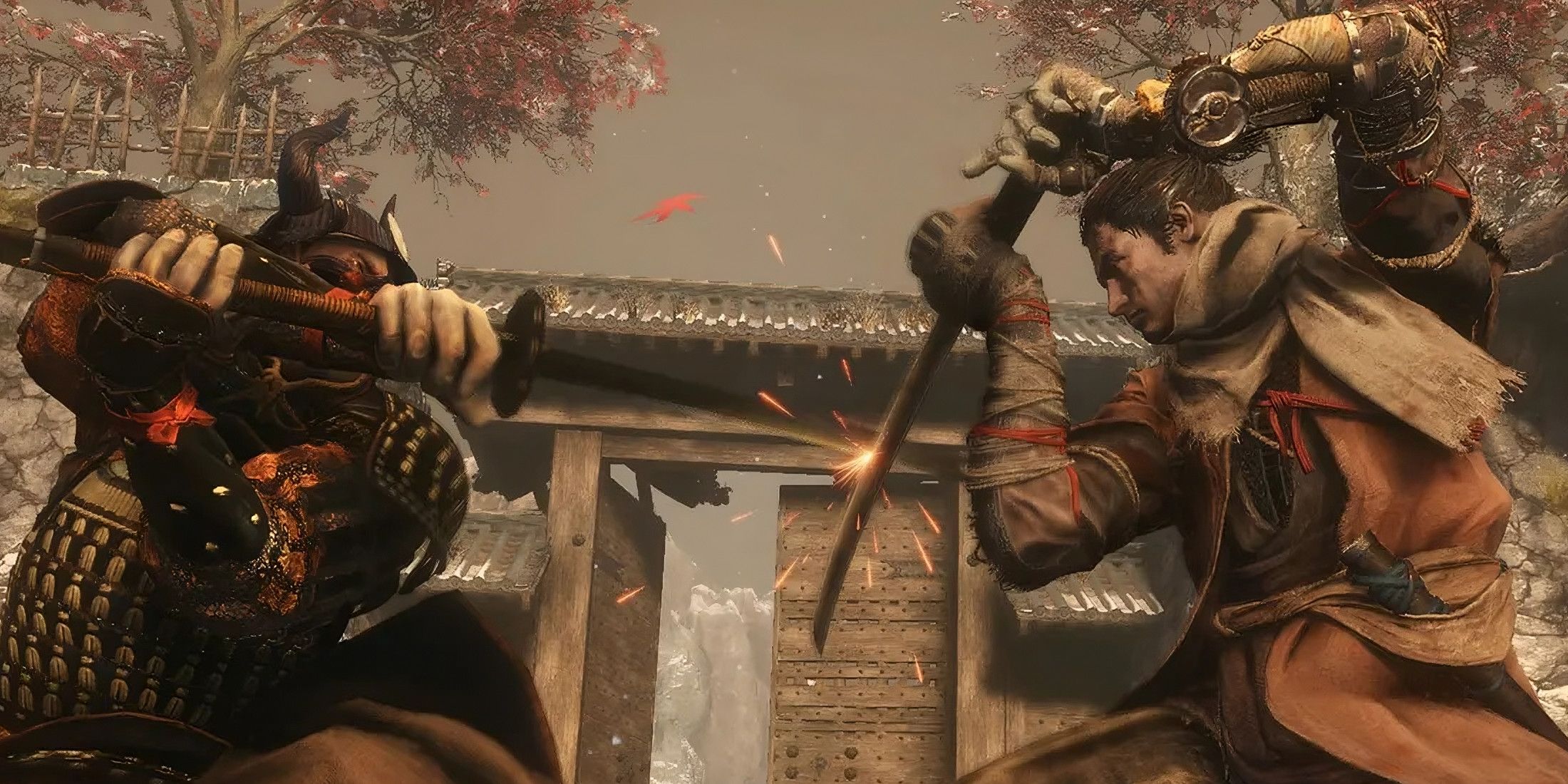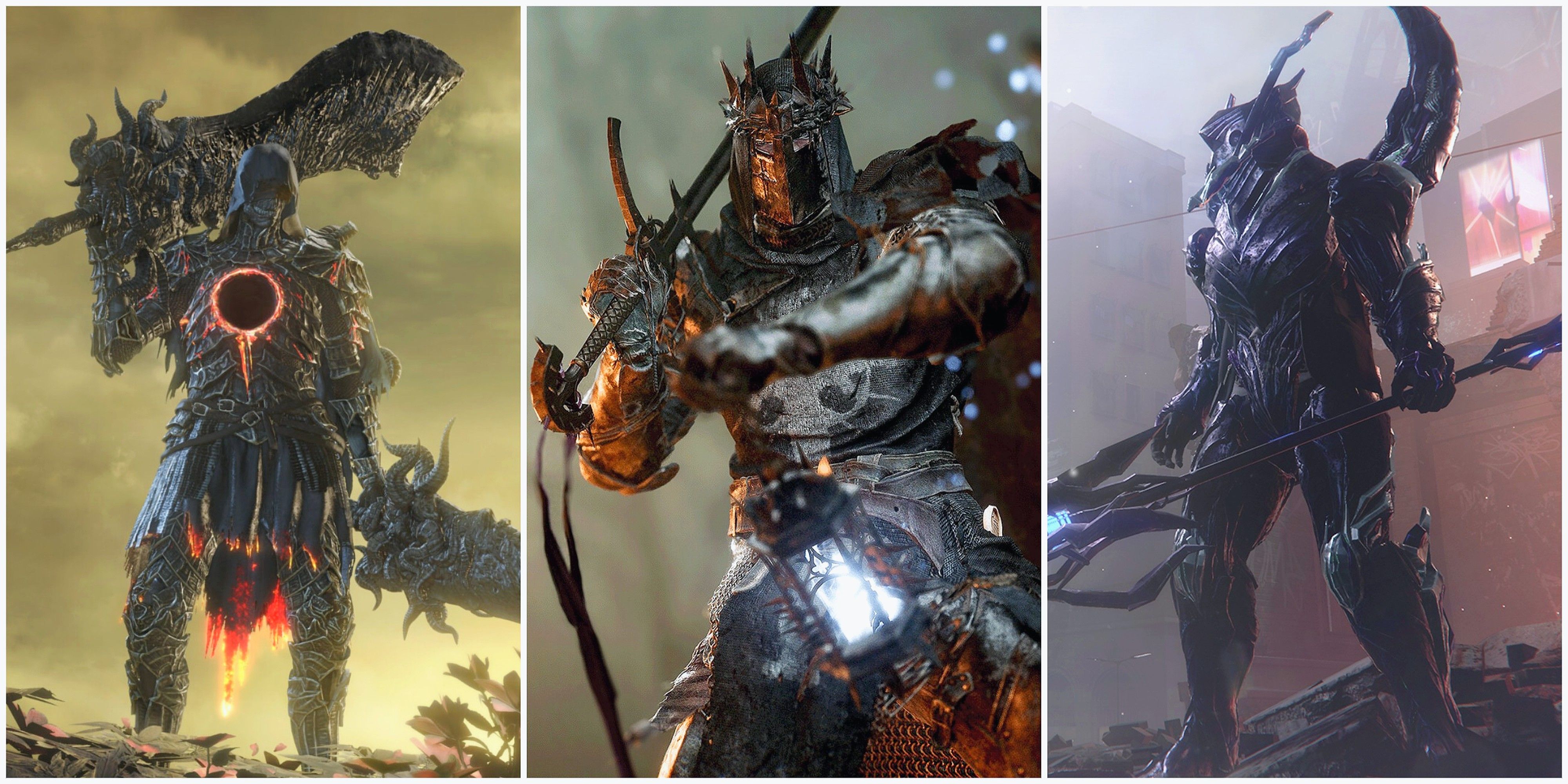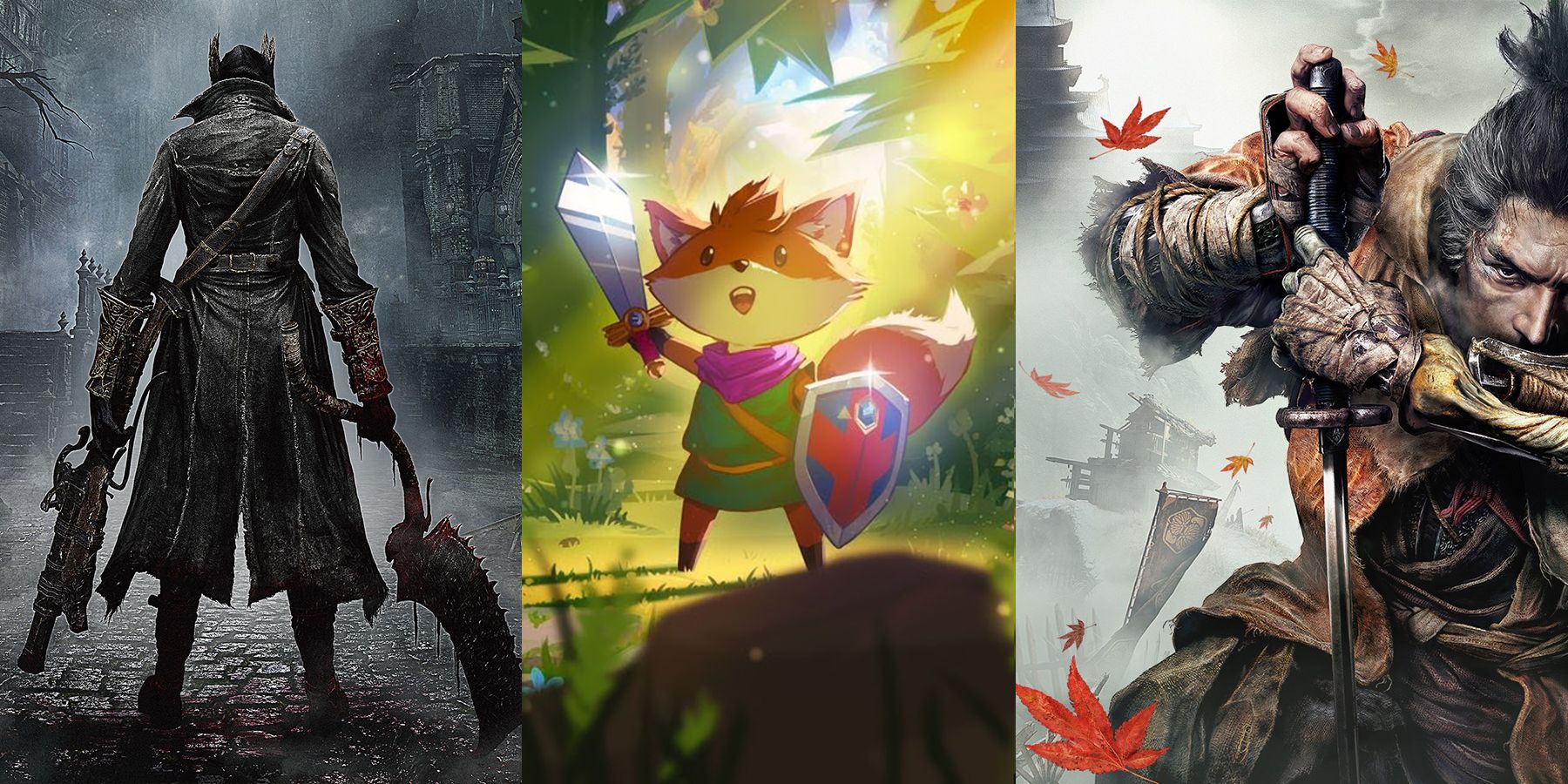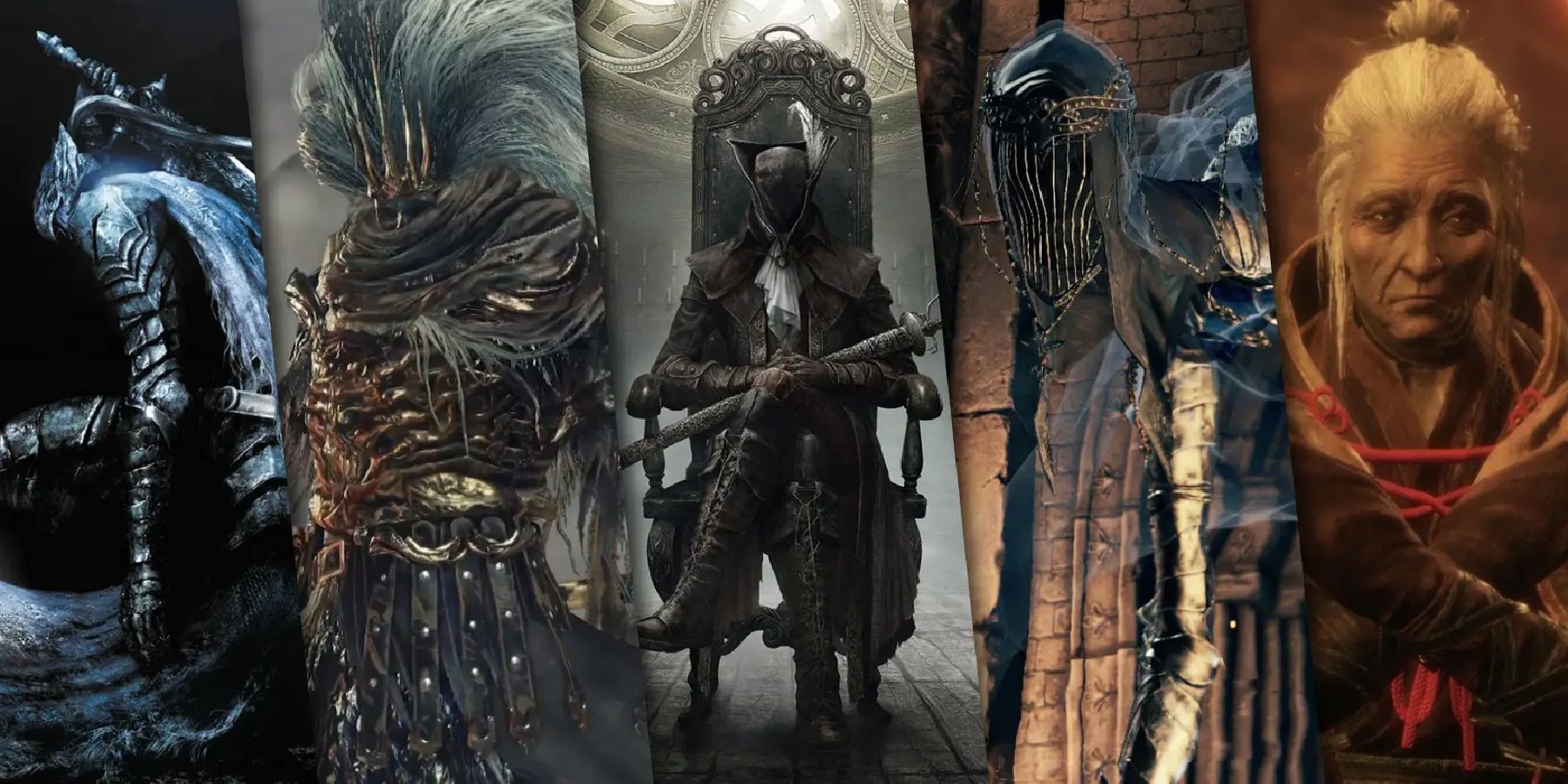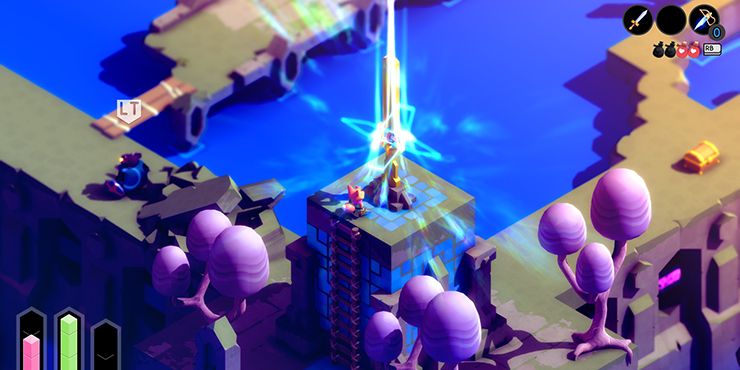Andrew Shouldice's Tunic has released after seven years of development, and players have discovered the seemingly-cute Zelda-homage hides a tremendous challenge. That said, players who have been intimidated by FromSoftware's comparably punishing catalog of games may want to dip their feet into Tunic's vibrant, isometric world for similar thrills. In fact, the primary differentiation between Tunic and the early Zelda titles that influenced is the presence of several mechanics that would be right at home in any Souls-like game.
Like FromSoft's offerings, Tunic features highly technical combat and save points that revive felled enemies and restore healing potions charges. But such comparisons provide only a cursory reading of the similarities between Shouldice's opus and FromSoft's easy-mode averse gauntlets. These commonalities, tempered by a few crucial distinctions, make Tunic an ideal jumping-on point for players who are new to souls-like titles. The most obvious point of accessibility between the two game's is Tunic's charming art style, which boasts near-universal appeal.
The Aesthetic Antidote for Grimdarkness
In an interview with Game ZXC, Shouldice mentioned that a constant throughout Tunic's development has been players' positive response toward the game's fox hero. While FromSoft titles all have their own macabre sort of beauty, the grimdark, body-horror-laden settings of each title aren't for everybody. Gamers who have grown weary of relentless grimness, or those who simply don't have the stomach for multi-limbed monstrosities and undead dragons, may be better served by Tunic's vibrant world.
Influenced by other isometric titles such as the visually-stunning Monument Valley, Tunic's world is sunny, bright, and ultimately uplifting, even if the game is, as Shouldice describes it, an ultimately lonely experience. NPCs are few and far between in Tunic, and there is no multiplayer for players to write notes to each other or invade each other's worlds. But the extended experience of playing Tunic is primed for social interaction. The game's plethora of secrets is ripe for comparing notes with other players, while watching streamers who adopt different strategies and take alternate paths through the world results in an experience reminiscent of playing games on the couch with friends.
In brief, Tunic possesses capacity for the same sort of communal interactions as any FromSoft title, provided players are willing to spectate, speculate, and socialize with other fans of the game. At the same time, the lack of misleading notes and hilariously mislabeled animals eliminates an element of potential trolling that makes the game more forgiving than FromSoftware titles. Further, the sunny aesthetic and singleplayer focus are just the beginning of Tunic's accessibility.
A Slightly More Forgiving Challenge
It must be acknowledged that Tunic is by no means an easy game. Players should expect to routinely re-challenge bosses and occasionally die to normal monsters when they get careless. However, like FromSoft games, Tunic is ultimately a rigidly "fair" experience. Shouldice provides his fox hero with all the tools gamers need to succeed — provided they are willing to thoroughly scrutinize and explore the game world.
However, unlike most FromSoft titles, one-hit kills are rare and players have guard-rails around cliffs that would lead to fatal falls in Elden Ring, Bloodborne, Sekiro, Dark Souls, et al. Boss attack patterns also tend to be more consistently telegraphed than the foes of FromSoft's epics, who occasionally frustrate players with elaborate sequences of abruptly executed, high damage attacks. These concessions may seem minor, but the margin of reduced difficulty they provide can be enough to give determined players with a foothold in an otherwise unforgiving game.
Tunic is a deliberately cryptic game that is saturated with secrets, shortcuts, and hidden power-ups. Most of the signage in the game is written in an indecipherable runic script, and many of the game's secrets leverage isometry to carefully obscure pathways. Still, the game does provide players with some objectively accurate and useful hints in the form of manual pages. Each manual page holds secrets, such as notes in the margin that encourage players to use bombs liberally or faded outlines in dungeon maps hinting at secret passageways that may otherwise go unnoticed.
Accessibility Options, Freedom of Exploration, and Narrative Parallels
Undoubtedly, the single greatest distinction between FromSoft's "No Easy Mode" ethos is Tunic's menu of accessibility options, which include everything from quality of life tweaks like reduced screen shake to options that remove stamina requirements. If players get really stuck on a particular boss or dungeon, there is even a no-fail mode option that should allow frustrated players to squeak by and continue exploring the world. Remarkably, these extra options do not erode the integrity of the game's souls-like mechanical ethos while also giving Tunic a distinct identity from both early Zelda titles and souls-likes.
Shouldice said that he wanted Tunic to evoke the wonder and freedom of classical titles, where tutorials were either absent or simplified to a bare minimum for the sake of cartridge space. Rather than the deterministic, sequential model of classic Zelda titles, where players must acquire items in a fixed, predetermined order, skilled Tunic players can push their luck and explore areas of the game that are well-beyond their equipment and gear levels - just like in most FromSoft games. Even FromSoft titles predating the open world Elden Ring often provided players with branching paths through the game world, allowing them to progress into areas that defy expected narrative and mechanical through-lines.
The last point of commonality between FromSoft and Shouldice's approach to design is how both games deliver narrative to players. Rather than a consumptive model of narration, where the games provide players with a set sequence, objectively accurate narrative, Tunic and FromSoft provide players with hints of what has transpired to bring the world to its current state. This effectively transforms the act of narrative interpretation into a creative endeavor. Furthermore, the player's experience in both titles is meant to reflect the experience of the protagonist. Just as it is initially unclear what it means to be a Tarnished in Elden Ring, players assume the identity of Tunic's fox without context.
Freedom of interpretation is ultimately the unifying element between both titles. Gamers who are eager to experience that sort of magical exploration, but have been on the fence about diving into FromSoft's ultra challenging oeuvre of games should consider giving Tunic a try.
Tunic is now available on Steam, Xbox One, and Xbox Series X/S.

